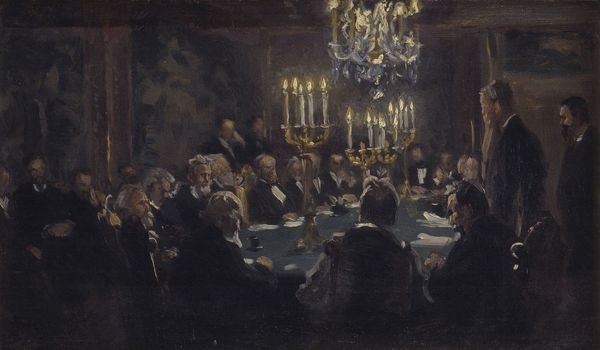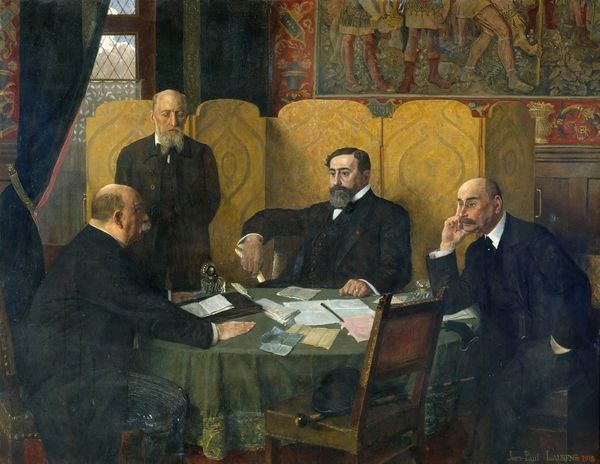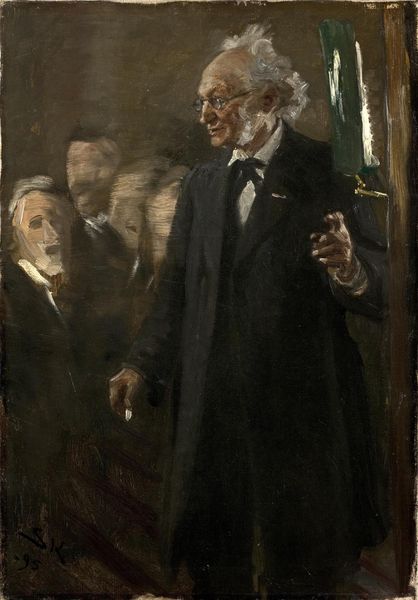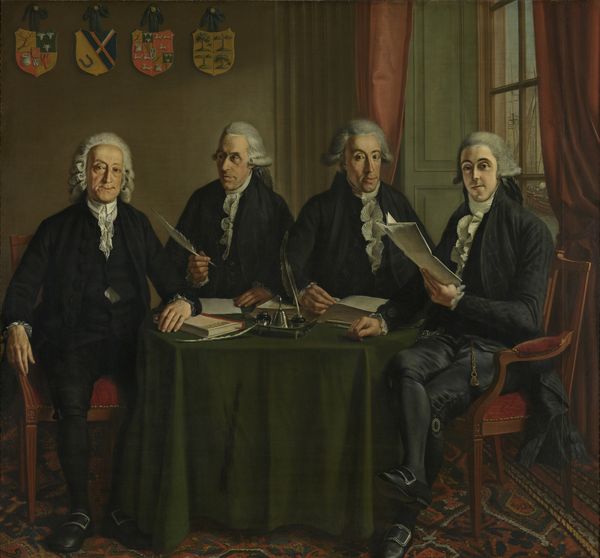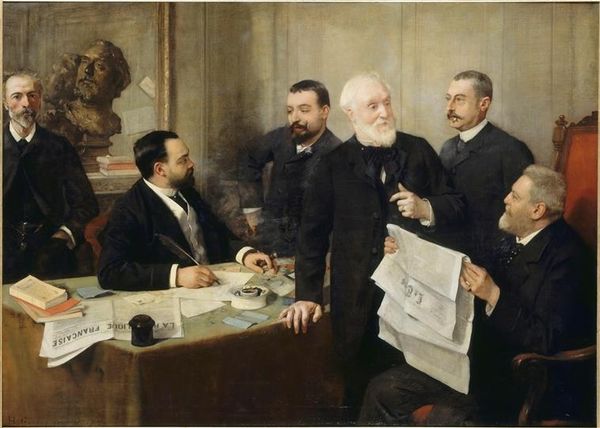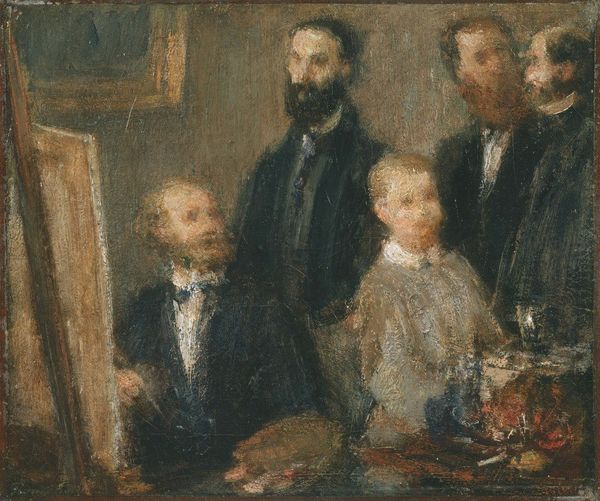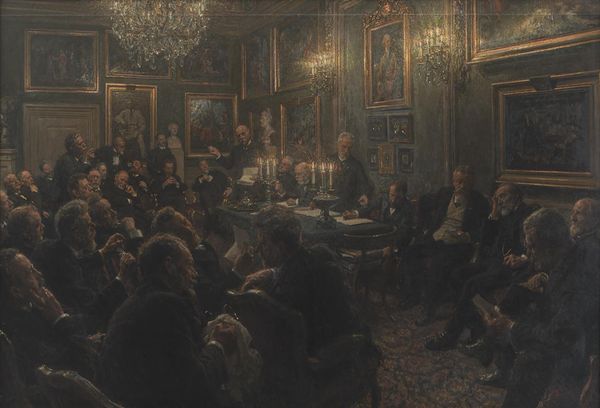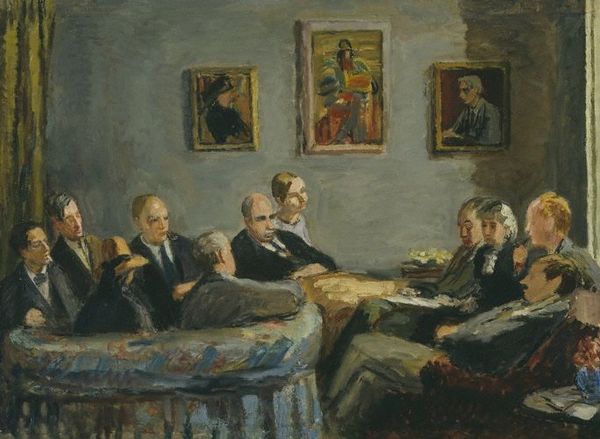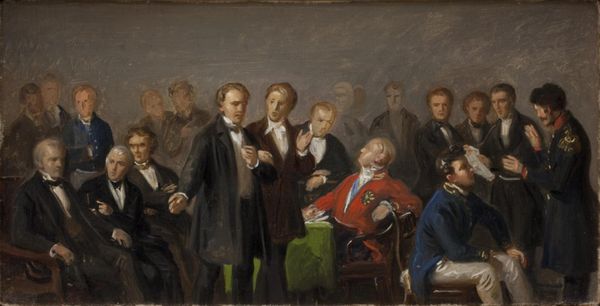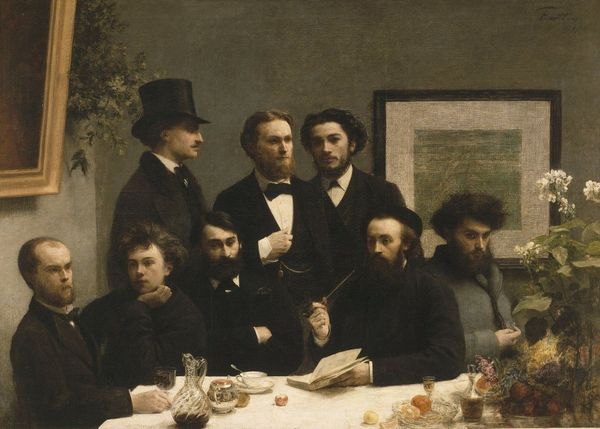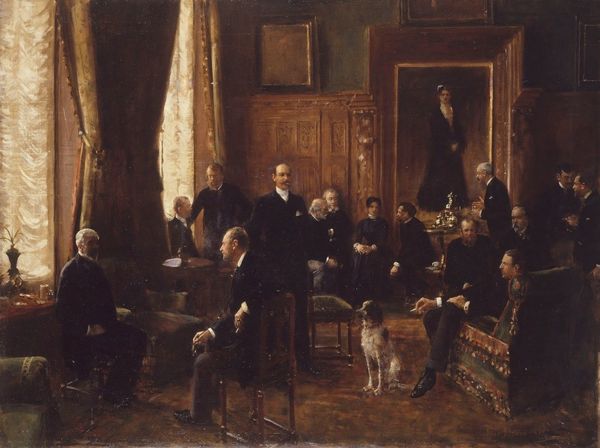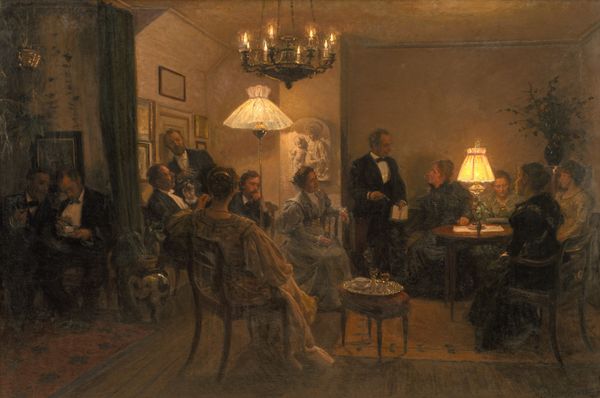
Copyright: Public Domain: Artvee
Curator: Peder Severin Krøyer's "Portrætgruppe," painted in 1896, presents a fascinating study in civic duty and male solidarity. Editor: Immediately, I’m struck by the somber mood, almost sepia-toned despite being an oil painting. The composition feels weighty, anchored by these four figures and that central candelabra. Curator: Absolutely. We can read this painting as a visualization of power dynamics at the close of the 19th century. Consider the role these men likely held in society, perhaps as community leaders or landowners. How did Krøyer, as a product of his time, reinforce or challenge this social hierarchy? Editor: The very *material* darkness feels relevant. What kind of paint application allowed such a heavy darkness? How does the manufacturing and cost of this dark pigment impact the reading of wealth and status already inherent in the clothing and setting? Curator: Those are vital questions. Note how each individual is rendered—distinct yet connected through their shared formal attire. There is a sense of collective purpose. Editor: Agreed. Krøyer’s brushwork gives us a good sense of fabric textures, the crisp whites of the linen, the heavier woolen dark suits. These items would've been produced via very specific means, indicative of industrial output alongside crafted details. Curator: Yes, and those material signifiers create a collective identity: These men are respectable, educated, and invested in upholding a certain order. This begs the question, who is absent from this scene and why? What voices and experiences are intentionally left out? Editor: It makes me want to know what sort of underpainting informs the final dark values of this work. Did he begin light and gradually layer? The making and construction of a representational world so clearly suggests another hidden reality that needs extraction. Curator: Examining who has historically been excluded from the halls of power opens conversations on ongoing battles for equitable representation today. Thank you, Peder. Editor: Krøyer’s work highlights how both the cost and labor connected with even the raw ingredients of this image inform a broader narrative. Thank you.
Comments
No comments
Be the first to comment and join the conversation on the ultimate creative platform.
